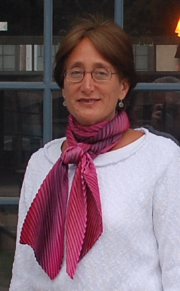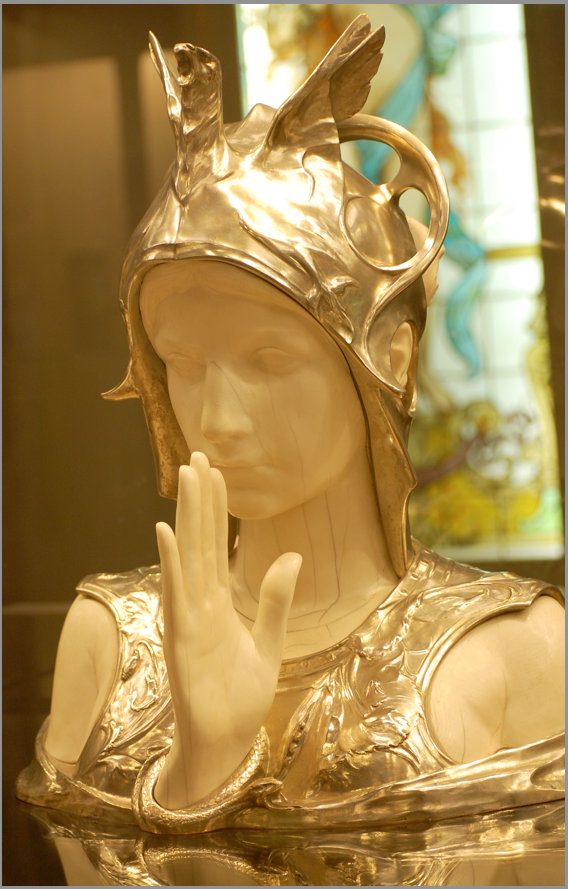
CMSI Lecture: Debora Silverman
Event date: Thursday 19 October 2017, 5.30 – 7 p.m.
Location: Faculty of Arts and Philosophy, Blandijnberg 2, Auditorium 4 Jaap Kruithof (formerly known as Auditorium B)
“‘The Great Forgetting’ and the Never Seen: Violence, Modernism, and the Visual Unconscious of Belgian Colonialism at the Tervuren Royal Museum for Central Africa, 1897-2017”; given by Professor Debora Silverman (UCLA)
Abstract
In 2005, the Royal Museum for Central Africa in Tervuren, just outside Brussels, mounted a major exhibition, “Memory of the Congo,” that attempted to confront for the first time a brutal colonial history in the center of the existing institution of official national denial. Prompted by this inaugural revision of 2005, the Museum’s rarely exhibited core collections of Art Nouveau ivory sculptures and wood furnishings were reclaimed to public view. These objects exemplify a complex and understudied mix of artistic innovation, political radicalism, and imperial enthrallment shared by members of the fin-de-siècle Belgian avant-garde, and they form part of a distinctively Belgian design style made from the raw materials of empire. This lecture, drawn from extensive research and a forthcoming book, identifies the origins of Belgian Art Nouveau as a specifically Congo nature style in the 1890s, and the ways that stylistic forms of modernism expressed a displaced encounter with a distant, but encroaching, imperial violence—what I call the return of the repressor in visual form. More broadly, the lecture brings back to the interpretive field a surprisingly unexamined cultural history of violence in nineteenth-century Belgium and suggests its interaction with patterns of violence in the Congo Free State. The lecture seeks to subvert a pattern of national and global forgetting that may be accompanying the renovations still underway at the Royal Museum as well as the new international circulation of its collections.
Nouveau ivory sculptures and wood furnishings were reclaimed to public view. These objects exemplify a complex and understudied mix of artistic innovation, political radicalism, and imperial enthrallment shared by members of the fin-de-siècle Belgian avant-garde, and they form part of a distinctively Belgian design style made from the raw materials of empire. This lecture, drawn from extensive research and a forthcoming book, identifies the origins of Belgian Art Nouveau as a specifically Congo nature style in the 1890s, and the ways that stylistic forms of modernism expressed a displaced encounter with a distant, but encroaching, imperial violence—what I call the return of the repressor in visual form. More broadly, the lecture brings back to the interpretive field a surprisingly unexamined cultural history of violence in nineteenth-century Belgium and suggests its interaction with patterns of violence in the Congo Free State. The lecture seeks to subvert a pattern of national and global forgetting that may be accompanying the renovations still underway at the Royal Museum as well as the new international circulation of its collections.
Bio
Debora Silverman is Distinguished Professor of History and Art History at UCLA, where she holds the University of California Presidential Chair in Modern European History, Art, and Culture. She received her B.A., M.A., and Ph.D. from Princeton University. She teaches and has written widely on the visual arts, politics, and the emergence of the irrational in fin-de-siècle Europe, as well as critical studies of art, memory, and violence in the contemporary world. Her prize-winning books include Selling Culture: Bloomingdale’s, Diana Vreeland, and the Aristocracy of Taste in Reagan’s America; Art Nouveau in Fin-de-Siècle France: Politics, Psychology, and Style (Berkshire Conference Prize); and Van Gogh and Gauguin: The Search for Sacred Art (Ralph Waldo Emerson National Prize for Best Book in the Humanities; PEN American Center National Prize for “outstanding writing on the visual arts”). Professor Silverman has received a number of awards and fellowships, including the Guggenheim Foundation Fellowship, the Getty Research Institute Scholars’ Fellowship, a Historical Studies Member at the Institute for Advanced Study in Princeton, the Marta Weeks Senior Fellow award at the Stanford Center for the Humanities, and a Cullman Center Fellowship at the New York Public Library. She is an elected Member of the American Academy of Art and Sciences.
Professor Silverman’s recent publications explore the impact of the Congo Free State on Belgian modernism, Art Nouveau’s “whiplash style” as “Congo Style,” and the origins and politics of memory of the Tervuren Royal Museum for Central Africa. These articles include “Boundaries: Bourgeois Belgium and Emile Verhaeren’s ‘Tentacular’ Modernism,” Modern Intellectual History, Summer 2017; “Diasporas of Art: History, the Tervuren Royal Museum for Central Africa, and the Politics of Memory in Belgium, 1885-2014,” The Journal of Modern History (87:3), September, 2015, winner of the 2016 Berkshire Conference Article Prize and the 2016 Bi-annual Higby Prize in Modern Europe; “Ensor’s Panache: James Ensor, the Army and the Congo in Belgium, 1887,” Chicago Art Institute, Exhibition Research Catalogue, 2014; “Art Nouveau, Art of Darkness: African Lineages of Belgian Modernism, I, II, III” (three parts), in West 86th: A Journal of Decorative Arts, Design History, and Material Culture, Fall 2011, Spring 2012, and Spring 2013 (123 pages); “Marketing Thanatos: The Horror of Damien Hirst,” American Imago, Fall 2011; and “Modernité Sans Frontières? Culture, Politics, and the Boundaries of the Belgian Avant-Garde in King Leopold’s Belgium, 1885-1909,” American Imago, Spring 2011 (90 pages). Her book nearing completion is entitled Art of Darkness.
All are welcome. Admission is free, and registration is not required. For more information, please contact Stef Craps.
